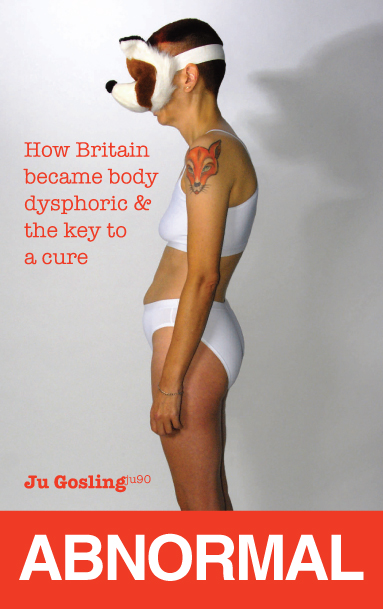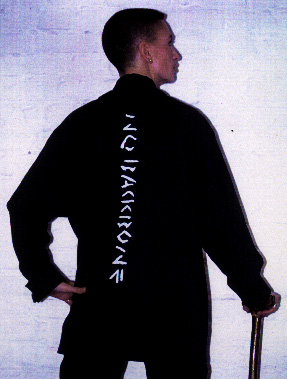
 As
I had already realised, there is no such thing as a magic cure outside
of fairy stories, and while I love science fiction, I do not mistake it
for RL. So I was not surprised - nor indeed disappointed, since I have
Pride
- when, at the end of six months of wearing the brace full-time, I was
still disabled. However, using it, which I continued to do on a part-time
basis, did improve my life significantly.
As
I had already realised, there is no such thing as a magic cure outside
of fairy stories, and while I love science fiction, I do not mistake it
for RL. So I was not surprised - nor indeed disappointed, since I have
Pride
- when, at the end of six months of wearing the brace full-time, I was
still disabled. However, using it, which I continued to do on a part-time
basis, did improve my life significantly.
First, it relieved my pain to some extent, by preventing me from movements which aggravate the cause of my pain, and thus it extended my physical abilities. And by protecting my spine from injury, it made me physically more confident, particularly in crowds, and allowed me to improve my fitness.
Then, the experience of wearing the brace, including confronting the effect which my impairment has had on my appearance so directly, increased my comfort with my body in all its aspects, and so my Pride. And because it made me so visible, but with an image that I liked, it gave me greater self-confidence.
As a result of all this, I was able, finally, to complete the "writing up" of my PhD hyperthesis, Virtual Worlds of Girls: my doctors now have to call me "doctor" ;-) And for the first time since becoming disabled, I was able to move to living independently. What greater magic could I ask for?
More recently I was able to work with orthotist Jonathan Wright to make a cast for a new brace, and then to work with sculptor Andrew Logan to decorate it for exhibition as part of the Adorn, Equip touring exhibition. Jonathan made me a second brace for domestic use - covered in black suede, and with black leather straps, it is very different from the original brace/borg.
In 1999 I also became a part-time wheelchair user, at times when wearing the brace would be inappropriate and when I could not manage with the walking stick alone. I realised that this, too, would extend my mobility - by providing me with appropriate seating, by saving me from the pain of standing and walking, and by reducing my fatigue levels - thus enabling me to do more and go further than I could otherwise. I wrote about wheelchair use during an artist's residency with students from Hereward College, Coventry: this essay can be found on the Adorn, Equip website. Later I also wrote a show about it, Wheels on Fire.
My limits then became environmental rather than physical. However, in 2000 I experienced a serious illness resulting from discrimination, and from then on I have had additional impairments. (In spring 2005, my discrimination case against the National Union of Journalists came to a close after they had been found guilty of four counts of disability discrimination, two of them major, and of personal injury. I have still not received an apology, nor any expression of regret.)
Because of the lower brain damage caused by my illness, I now have difficulty in distinguishing what I am trying to focus on from the general background of life. This means that I have problems in understanding people's speech when I have only just met them - or am on the phone - and in hearing anyone against background noise, although I have been taught some very useful techniques to help to minimise the impact of this. I also have difficulty in seeing things even when they are straight in front of me, as it takes my brain longer to process visual information, and my eyes are very sensitive to light as the pupils are slow to react to light changes. Writing comes more easily than speaking, as I have to think hard to access the names of both people and objects. And in general my mind finds it harder to make connections, particularly when I am tired, which makes everyday life more difficult. As with many disabled people, I need to manage my energy carefully to ensure that I can continue with the most important things in life, including, for me, my career.
My mobility is now more restricted than it has ever been. My fitness deteriorated during the months when I was seriously ill, leading me to develop carpal tunnel syndrome in both hands when I returned to work. This has severely limited my ability to use a stick, even after surgery on my right hand in 2004, and means my hands are now permanently braced. In addition I can now only use a spinal brace for limited periods, as my blood pressure is unstable and the effects of brace use on my diaphragm can exacerbate this. As a result I am now a full-time wheelchair user unless I am at home or only very short distances are involved, but I am no longer able to drive and have great difficulty in using even so-called accessible public transport. And whereas before I only needed help with practical tasks such as shopping, cleaning and lifting, I now need daily support in order to continue living and working independently, and generally cannot leave my home without being accompanied. My life, too, has never been less secret.
But life is a continual process of change, and as always it brings gains as well as losses. Click here to see what I am up to at the moment.
Shirt design & photo by K+
| Dr Ju Gosling aka ju90's ABNORMAL: How Britain became body dysphoric and the key to a cure is available now for just £3.09 for the Kindle or in a limited-edition hardback with full-colour art plates for £20 inc UK postage and packing. |  |